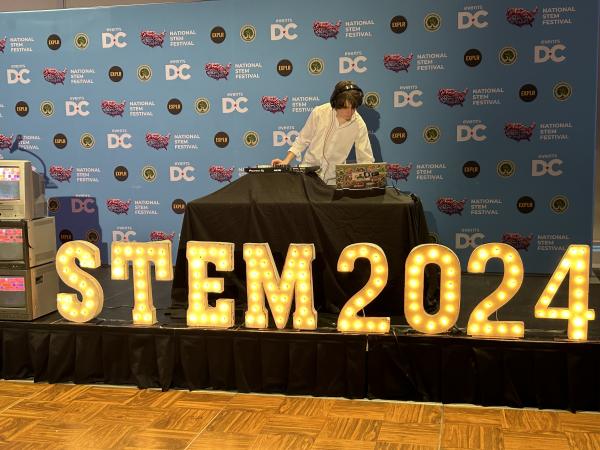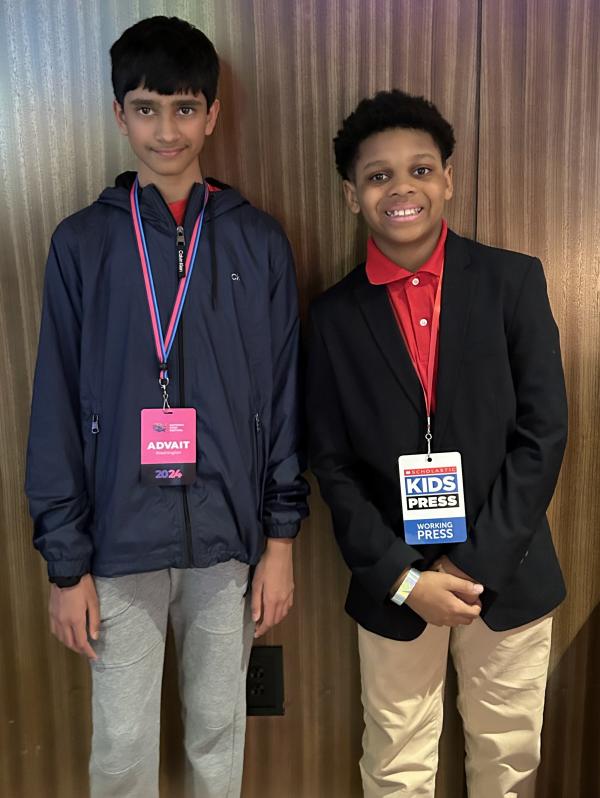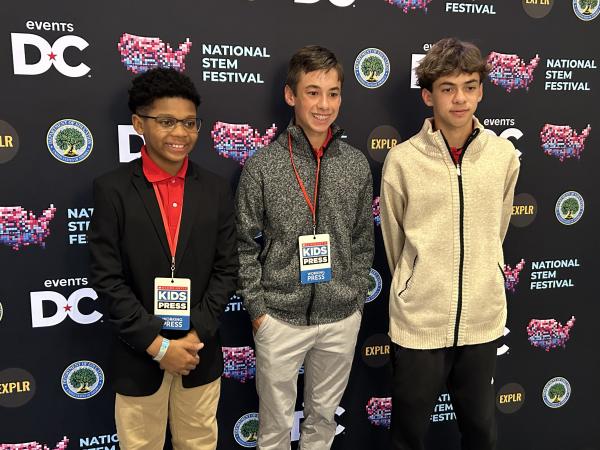KID REPORTERS’ NOTEBOOK
A National STEM Festival Celebrates Student Innovation


A celebration for award-winning student innovators gets underway at the International Spy Museum in Washington, D.C.
On April 13, the International Spy Museum in Washington, D.C., buzzed with excitement. A reception was underway to honor visionary students from across the United States. The students, in grades 6 through 12, had been selected to showcase their projects at the first-ever National STEM Challenge and Festival. STEM stands for Science, Technology, Engineering, and Math.
Co-presented by the U.S. Department of Education and EXPLR, the Festival spotlighted students who had been recognized in the first-ever National STEM Challenge. EXPLR, a multimedia STEM company, created the Challenge. In the competition, students used their knowledge of STEM to design projects focused on environmental sustainability, healthcare, space exploration, and more. I covered the Festival with fellow Scholastic Kid Reporters Gavin Gracey and Logan Gracey.

Xander at the National STEM Festival with Agneya Tharun, who is developing an alternative to solar power
IMPROVING SOLAR ENERGY
Agneya Tharun of Clarksburg, Maryland, was among the young innovators at the event. His project, “Redefining Energy from the Sun,” was submitted in a category called “Power the Planet.” Agneya’s research offered an energy-saving approach to harnessing solar power.
“It uses a fresher lens,” Agneya said, “to focus light onto a thermoelectric generator and use heat energy to produce electricity.” The innovation would create the same amount of power as a solar panel but require fewer resources and chemicals.

Xander with Advait Badrish, a student inventor who created a device to detect heart disease
IMPROVING EARLY DETECTION
Advait Badrish from Redmond, Washington, showcased a project in the “Health & Medicine” category. Called “HeartNN: A High-Accuracy Neural Network and Smartphone App for Cardiac Auscultation,” Advait’s entry focused on heart disease, which is common but often goes undetected. If a doctor can determine the presence of disease by listening to a patient’s heart, Advait thought, why can’t a machine in a patient’s home?
“I used artificial intelligence [AI] with the recording of the user’s heart sound to determine if the heart is normal or abnormal,” Advait explained. His innovation, which has an accuracy of 98%, could improve the treatment of heart disease worldwide.

Xander with student innovator Alicia Wright
SUSTAINABLE SOLUTIONS
Alicia Wright of Conyers, Georgia, focused on CO2 emissions in her award-winning project. It was called “Natural Oils on Bio Bricks.” During her research, Alicia discovered that the majority of our CO2 emissions come from cement bricks.
“I utilized the property of fungus to grow my own sustainable alternative to cement bricks in the construction industry,” Alicia explained. Her work not only promotes eco-friendly practices; it also underscores the importance of bioengineering innovations in addressing environmental pollution.
Many STEM Challenge participants expressed a commitment to sharing their research to help others. “I hope to spread this knowledge to people around me,” Alicia said. Advait, meanwhile, outlined plans to further enhance his app and make it accessible worldwide.

Xander at the National Stem Festival with fellow Kid Reporters Gavin Gracey (center) and Logan Gracey
